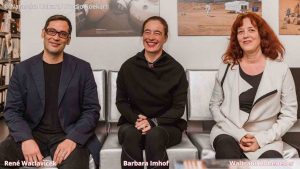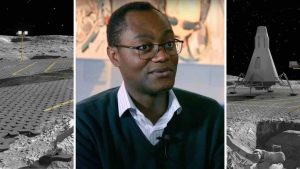
Matt Russo - kosmomagazine.it
We met Matt Russo, astrophysicist, musician, and sonification specialist. Sonification is the use of nonspeech audio to convey information. More specifically, sonification is the transformation of data relations into perceived relations in an acoustic signal for the purposes of facilitating communication or interpretation. Russo teaches physics at the University of Toronto (Canada), and he frequently collaborates with NASA to make astronomy more accessible to the visually impaired.
The great Italian artist Michelangelo Buonarroti used to say: “Each block of stone has a statue inside and it is the sculptor’s task to discover it”. Could a musician expert in sonification say the same phrase? For example: in every Creation of the Universe and of the Earth there are hidden musical notes, and the musician’s task is to free them.
Some systems such as stars can resonate in ways similar to a musical instrument. Because sound waves can propagate within them and reflect off the boundaries, they can ‘ring’ with a certain set of frequencies. However, these frequencies are much too low for human ears to hear and the waves can’t travel across the near vacuum of space to reach us directly. The orbits of planets and moons can also be likened to a type of silent rhythm. In some special cases, the planet’s orbits are related so that there is repeating order within the rhythm. The planets in our solar system are not in orbital resonances, so there is no such musical pattern. So, there is musicality in the universe but you have to look in the right places.
Could converting all that we see with our eyes, into acoustic elements, help the science?
The greatest advantage to using sonification within science is that it can increase accessibility to those who are blind or visually impaired. There are several blind astronomers such as Wanda Diaz Merced and Nic Bonne who use sonification as part of their research and their participation and contributions help science in general.
There are cases where listening to a signal can reveal patterns that may be obscured visually. This is because our auditory system is much more sensitive than our visual system to variations happening in time. It can also help identify a signal that is buried in noise. This is something that we do effortlessly in everyday life such as when we are able to understand someone speak even at a loud party with several other random sounds occurring.
Credits: Image: NASA, ESA, CSA, and STScI; Accessibility Production: NASA, ESA, CSA, STScI, and Kimberly Arcand (CXC/SAO), Matt Russo and Andrew Santaguida (SYSTEM Sounds), Quyen Hart (STScI), Claire Blome (STScI), and Christine Malec (consultant).
READ ALSO –> [EXCLUSIVE INTERVIEW] James Webb Telescope experts answer our questions
You are collaborating with NASA to make astronomy accessible to the blind. I imagined what a world could be heard through hearing and not seen through the eyes. Do you think that the best way to understand the world and people is to listen to the harmony that comes from the depths of the mind or the Universe?
People learn best when more of their senses are engaged. The universe contains harmony and chaos, consonance and dissonance. Using sound is another way for us to experience and understand it all.
The Universe and the living beings perfect us like this, full of an invisible harmony: the planets that orbit around a star; the shape and scent of a flower; the perfection of the human body etc … Do you believe in a God, or a higher being, who used music to create all this harmony and perfection?
No. The harmony and rhythms present in some very special astronomical systems are a consequence of physics. Supernatural explanations are neither required nor helpful as they are unfalsifiable. The universe is a beautiful place, a dynamic interplay of order and chaos. Understanding our wonderful universe through science is one of life’s greatest thrills.
- Cover image credits: Matt Russo photo: www.astromattrusso.com / James Webb Image: NASA, ESA, CSA, and STScI; Accessibility Production: NASA, ESA, CSA, STScI, and Kimberly Arcand (CXC/SAO), Matt Russo and Andrew Santaguida (SYSTEM Sounds), Quyen Hart (STScI), Claire Blome (STScI), and Christine Malec (consultant).



